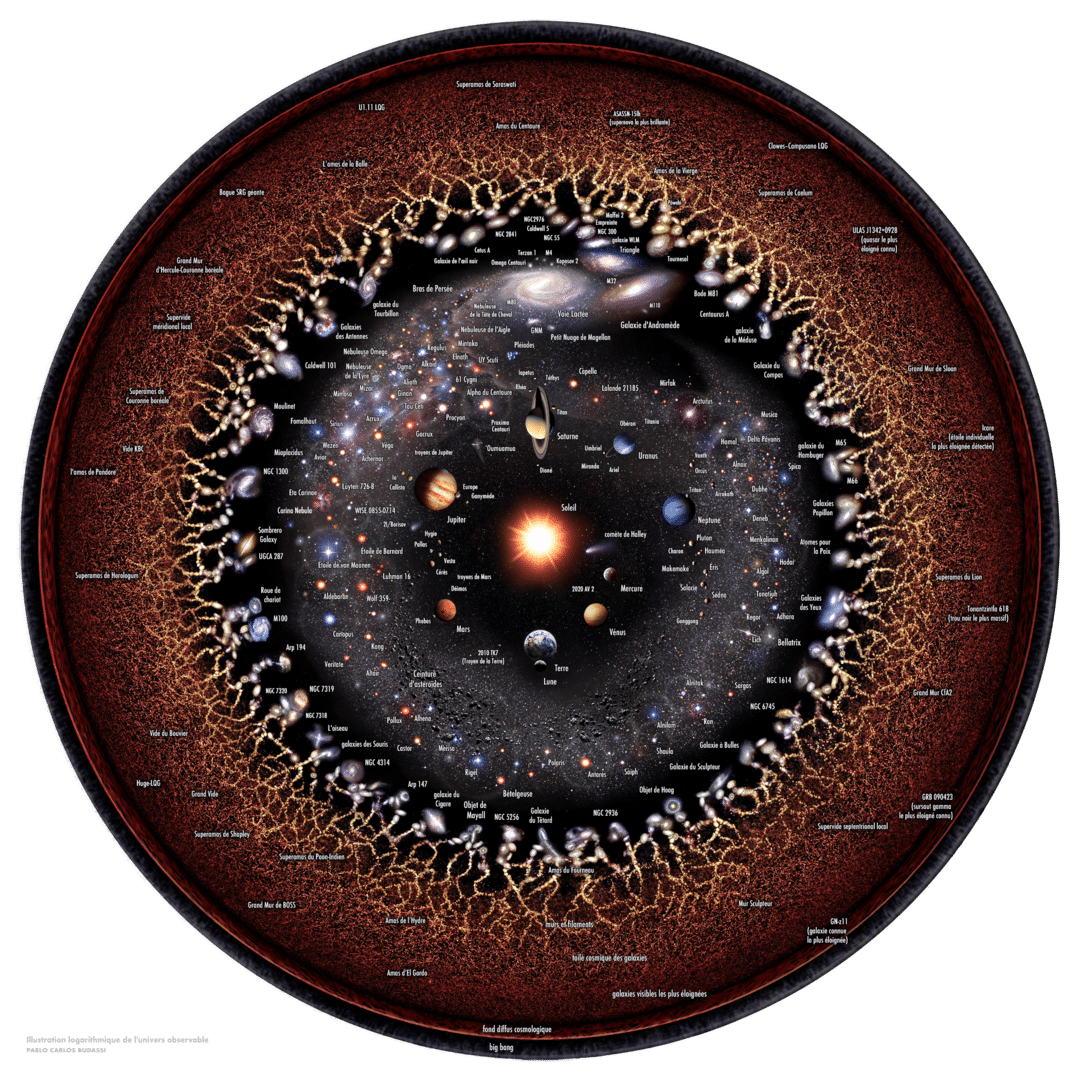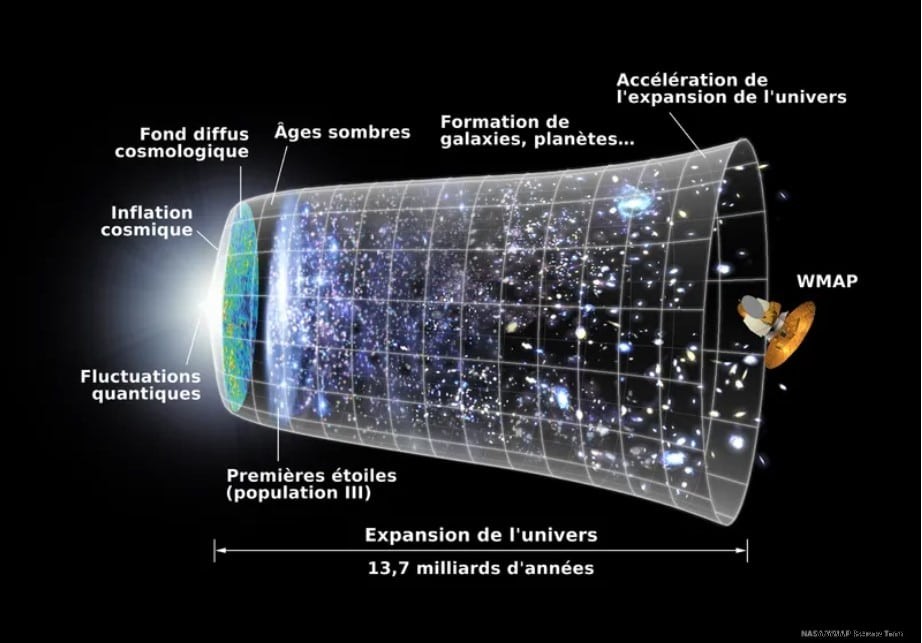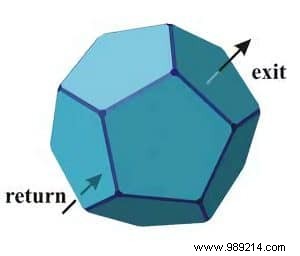To the time when the largest space telescope in the world James Webb starts its commissioning 1.5 million kilometers from Earth, questions about the infinitely large never cease to arise. How did galaxies form? If we have known since the 1920s that the Universe is expanding, how can we measure it and what does this reveal about the finitude of the cosmos? Is the Universe really infinite, or finite but not bounded? One thing is certain, the question is still debated in the scientific world.
Appeared about 13.8 billion years ago with the Big Bang, in theory, the Universe designates all that exists:space, time, energy and matter. Therefore, it is difficult to conceive of it delimited by edges as a physical object, because the existence of an edge would imply the presence of something outside the Universe... which is impossible. However, it could very well be finished, but without edges, with a space closing in on itself.
Whether the Universe is finite or infinite, we cannot observe everything about it. Since its age is "finite", we can only observe a finite volume:this is the observable (or visible) Universe. It probably represents only 2% of the entire Universe, in which light has a finite and constant speed in all directions. An event thus reaches its observer shifted in the time it took light to reach it.
Even for the observable Universe, the notion of limits remains important and we cannot therefore see a pre-Big Bang phenomenon. Indeed, the limits of the observable Universe coincide with the most distant place in the Universe for which light has taken less than 13.8 billion years to reach the observer. The "cosmological horizon" refers to that limit beyond which nothing can be seen.

The diameter of the observable Universe is estimated at 100 billion light-years by astrophysicists. It contains stars spread across about 100 billion galaxies, which are themselves organized into clusters and superclusters of galaxies. Does this amount to asserting that the visible Universe is finite in nature? Not so sure, because it gets bigger over time and the number of galaxies could be even bigger.
Two theories remain on the agenda:a finite but borderless space or an infinite space. The latter starts from the idea that the Universe has been constantly expanding since its birth. "The fate of the universe is determined by a struggle between the momentum of expansion and the force of gravity “, can we read in a NASA document. “The rate of expansion is expressed by the Hubble constant, while the force of gravity depends on the density and pressure of matter in the universe. If the pressure of matter is low, as it is with most forms of matter we know of, the fate of the universe is governed by density. If the density of the universe is less than the 'critical density', which is proportional to the square of the Hubble constant, then the universe will expand forever ". Otherwise, gravity will prevail and the Universe will collapse in on itself.
Recent measurements have even suggested that the expansion of the Universe is accelerating and that its speed of expansion is not necessarily constant, as explained to France Culture Julien Grain, researcher at the Institute of Orsay Space Astrophysics:"The expansion of the universe changes over its history, the universe does not always stretch at the same speed. It depends on the rate of matter that there is in space and that, we can measure it. We can therefore rewrite history in reverse and observe that for a very long time there were phases of decelerated expansion .

Another important data to consider is the shape of the Universe, determined in particular by its density. If the latter exceeds the critical density, then the Universe is spherical due to its curvature and finite volume. If the density of the Universe is less than the critical density, then its geometry is open (infinite) and negatively curved. Finally, if the density of the Universe is exactly equal to the critical density, then the geometry of the Universe is flat and of infinite extent.
According to NASA, "the simplest version of the inflationary theory (an extension of the Big Bang theory) predicts that the density of the Universe is very close to the critical density, and that its geometry is flat as a sheet of paper ". The WMAP spacecraft can also measure the basic parameters of the theory, geometry of the Universe included. Prior to the results from the ship, scientists were highlighting a flat universe with an accuracy of about 15%. In 2013, it is of infinite extent, because it is flat with a margin of error of only 0.4%.
However, studies contradict these findings. For years, astrophysicist Jean-Pierre Luminet and his colleagues have studied the possibility of a universe closing in on itself, a "dodecahedral space of Poincaré". “Nature uses the image of a soccer ball “, explains Jean-Pierre Luminet to Liberation. “As if we were living inside a kind of sphere formed by 12 slightly curved pentagons. But when you get to a pentagonal wall, you come back into the ball from the opposite side. This space is finite, but without edges and without limits, so one can travel there indefinitely ". The new model does not rule out the Big Bang theory, but the conception of an infinite and flat universe, giving it instead a spherical geometry where the parallels intersect at very great distances.

In November 2019, a study published in the journal Nature and based on a new interpretation of Planck data shows that the curvature of the Universe would be positive with 99% probability, although it is probably very small. “The assumption of a flat universe could therefore mask a cosmological crisis where disparate observed properties of the Universe appear to be mutually inconsistent write the researchers. "Future measurements are needed to clarify whether observed discrepancies are due to undetected systematics, new physics, or simply statistical fluctuation .
With their boundaryless model, Stephen Hawking and James Hartle claim that it would be more natural to consider closed universes than infinite universes, even if nothing is proven. Still, there is no consensus on the subject and that the hypothesis of the infinity of the Universe can never be observed or demonstrated, regardless of the power of the telescope used.